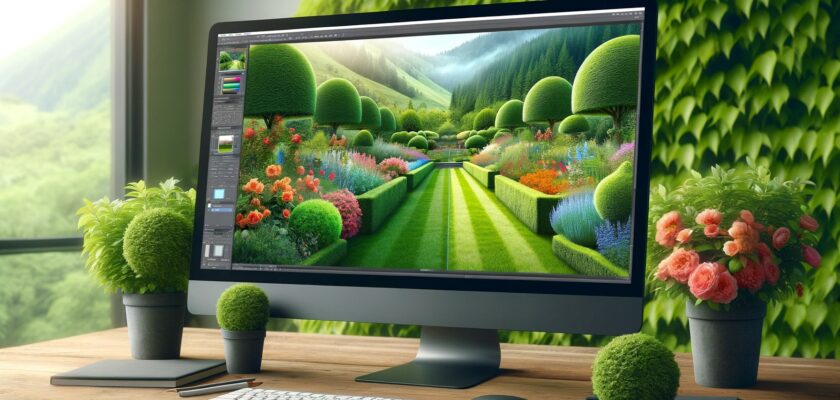In today's digital era, the realm of landscaping has transcended beyond physical tools and tangible designs. With advancements in image editing technologies, homeowners now have the luxury of visualizing and perfecting their dream lawns before a single seed is sown or a shovel hits the dirt. This article delves into the art of virtual landscaping, highlighting how tools like Image Background Remover and Image Upscaler can revolutionize your garden planning and design.
Transforming Your Garden Vision into a Digital Masterpiece
1. The Power of Background Removal
Imagine being able to erase unsightly elements from your garden photos or even change the entire backdrop to assess different aesthetic options. That's where tools like Background Remover come into play. These powerful software applications allow you to isolate your lawn from the rest of the image, offering a blank canvas to experiment with.
- Removing Distractions: Easily remove extraneous objects like hoses, toys, or even an old shed, giving a clearer view of the space.
- Trying Different Backdrops: Experiment with various backgrounds to envision how your lawn might look against different settings.
2. Upscaling Your Garden Images
The upscale image technology is a game-changer in garden planning. By enhancing the resolution and quality of your garden photos, these tools bring out intricate details, making it easier to visualize changes and additions.
- Enhanced Details: Upscale low-resolution images of your garden to see finer details, aiding in precise planning.
- Improved Texture Visualization: Get a better sense of how different plants and textures will look in your space.
A Step-by-Step Guide to Virtual Landscaping
Step 1: Capturing Your Current Lawn
Begin by taking several high-quality photographs of your current lawn from various angles. These images will serve as the foundation for your virtual landscaping project.
Step 2: Choosing the Right Tools
Select appropriate tools for background removal and image upscaling. Look for features like ease of use, quality of results, and compatibility with your device.
Step 3: Removing Unwanted Backgrounds
Use the Remove Background tool to isolate your lawn. This step allows you to focus solely on the lawn area, eliminating distractions and providing a clearer vision for potential changes.
Step 4: Upscaling for Clarity
With your lawn isolated, it's time to upscale your photo for better clarity and detail. This enhanced image will help you make more informed decisions about plant choices, color schemes, and layout.
Step 5: Experimenting with Designs
Now, the fun begins! Experiment with different plants, lawn shapes, garden features, and more. Use additional image editing tools to add these elements to your photo, playing around with various configurations.
Step 6: Refining and Finalizing Your Design
Refine your design through trial and error. Adjust placements, swap out plants, and tweak colors until you're satisfied with the virtual representation of your dream lawn.
Step 7: Bringing Your Virtual Design to Life
Once your virtual design is complete, use it as a blueprint for the actual landscaping work. Share it with a professional landscaper or use it as a guide for a DIY project.
The Benefits of Virtual Landscaping
- Cost-Effective Planning: Make mistakes and changes digitally, saving money on costly physical trials.
- Enhanced Creativity: Unleash your creativity without limitations, trying out bold and unique designs.
- Informed Decision Making: Understand precisely how different elements will look in your space, leading to better choices.
Conclusion
The integration of technologies in garden planning is more than a trend; it's a revolution in how we approach landscaping. By leveraging these tools, homeowners can turn their garden dreams into digital realities, ensuring that the final physical transformation of their outdoor space is exactly what they envisioned. Embrace these technologies, and watch as your dream lawn unfolds not just in your imagination, but on your screen, ready to be brought to life.

